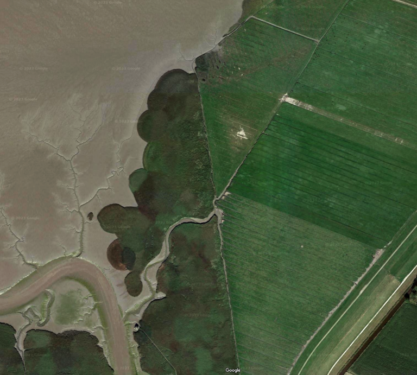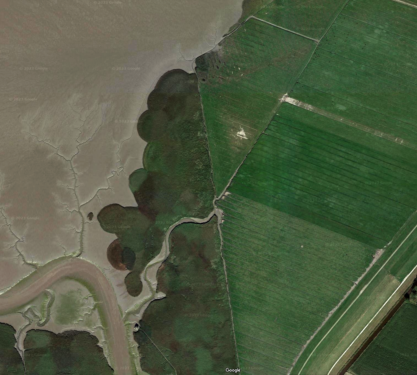Residency
October-December 2023: WaterLANDS, Ems-Dollard, NL
The residency focuses on ecological restoration in the context of the largest estuary and surrounding landscape in the North of the Netherlands. EU Horizon has funded the selection of six artists to each reflect on one of six different ecological restoration sites in Europe as part of the large-scale and ambitious project ‘WaterLANDS‘ (2023-2026).
During this first phase of my research period, as part of WaterLANDS in the Ems-Dollart estuary in the Netherlands, I visited the sites related to WaterLANDS during different periods of the year. These wetlands are part of a complex network of interdependent actors and agents, all affecting each other within the estuary and on the land.
My objective is to comprehend the functioning of this system and all the associated dynamics, including the effects of sedimentation in the water, land subsidence, dredging activities, gas extraction-induced earthquakes, harbor and cruise shipyard activities, and rising sea levels.
I have visited several history museums in the Groningen area to understand better the changing landscape’s cultural history and how people have interacted with the sea throughout history. This includes everything from the villagers living and farming within the wetlands on top of the Wierden to the construction of dikes to block the sea and live and farm behind them to the new construction of more fluid coastlines with open connections to the sea. Additionally, I am considering the landscape as a production site with agriculture, energy production, high-tech companies, and the upcoming aquaculture on the newly created Wetland.
The entire estuary is an ecosystem that spans national borders, and my research also encompasses all the processes taking place on the German side of the estuary. I find the complexity of this area fascinating, and I am touched by how different factors dramatically affect the ecosystem and the local population.

